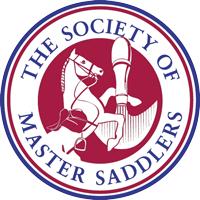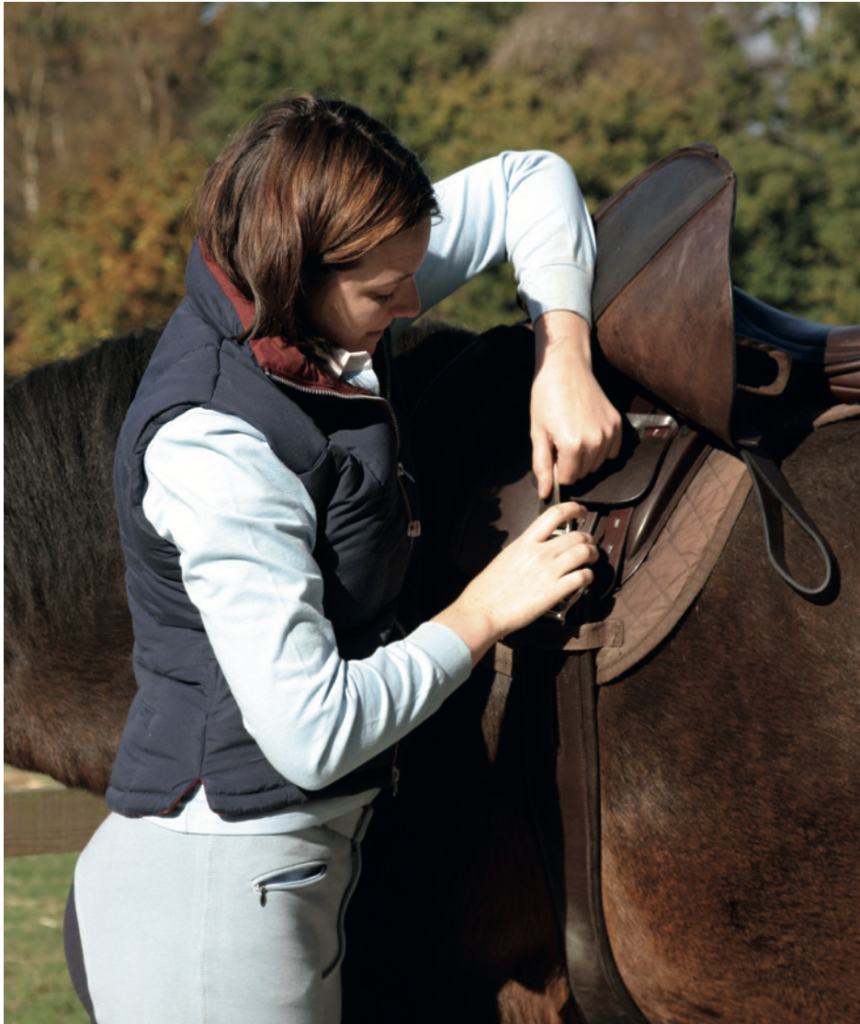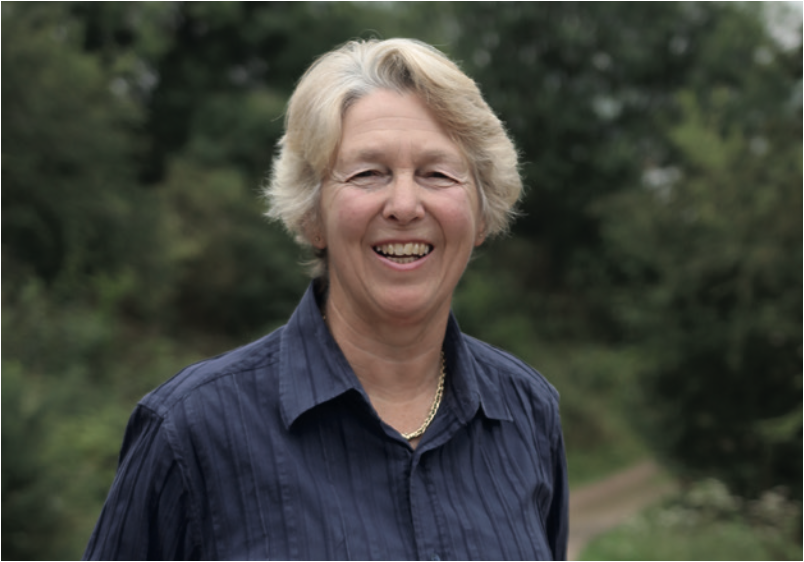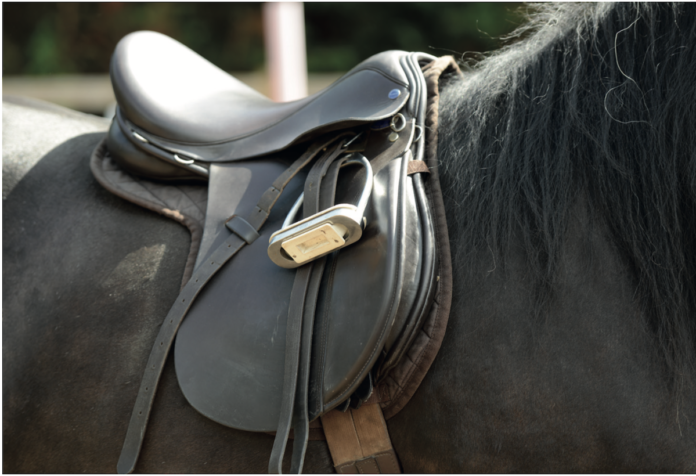
IT’S NOT ALWAYS ABOUT THE SADDLE…
Saddle fitters need tact and diplomacy when numnahs and girths threaten to undo all their hard work, says Kay Hastilow.
SMS qualified saddle fitters who read the feature and submit correct answers to the quiz will receive one CPD point.
How many saddle fitters recognise this scenario? You fitted a saddle and were delighted with the result. It was nicely balanced, stayed in place and fitted the rider well. The horse went beautifully in it.
A week later, the client rings to tell you that the saddle is rolling about or shifting to one side, it moves up the neck or slides back from the shoulders or the horse isn’t happy in it.
GIRTHS
As often as not, you go back to the customer to find it still seems to fit perfectly and the horse goes well. Yet the owner swears that the horse doesn’t go like that when you’re not there.
The fault often lies with other equipment they’re using - or unclear instruction from you.
GIRTHING OPTIONS
Several saddles have many different girthing options and unless you are crystal clear on which straps should be used (especially if one is being used as a balance strap), customers are likely to get it wrong with unwanted consequences.
In this scenario, I take a ball point pen and put a cross on the point of the straps they need to use. Once they’ve got into the habit, they will remember and the correct straps will start to show marks, but at least it gets them started the right way.
SADDLE CLOTHS
Perhaps you used your own, good quality saddle cloth, or they provided a decent one for you to try the saddle with?

Now you get there to find the customer using a cheap synthetic material one- and it’s a poor shape to boot. Such fabrics tend to have one thing in common, they’re slippery. And this causes the saddle to slip and move which, of course, the horse hates; horses like their saddles to be stable.
In addition, a poor saddle cloth may pull down onto the spine causing pressure, or be too narrow under the panels of the saddle.
Pads and thick numnahs, such as sheepskin, can alter the way the saddle fits so you need to ask if such items will be used after the fitting. If they are, then you must try the saddle with these items and adjust the fit as necessary.
I once spent ages fitting a really difficult horse where the shoulders were set so far forward that every saddler slid up the neck. It took all my skills to achieve an acceptable fit, only to hear that a week later the rider was complaining to her trainer that the saddle still shot forward.
I happened to be in the yard, and so looked in during a lesson. She had put a really thick sheepskin numnah under the saddle despite being advised not to do so!
Of course, anything used under the saddle needs to be clean. Cloths caked in dry sweat are not conducive to comfort for the horse.
GIRTHS WITH ELASTIC
What else might spoil your fit? We know that girths with elastic really aren’t terribly good for the horse.
Elastic just on one side encourages the saddle to move to one side; whilst elastic both sides, unless it is really a minimal amount of very high quality elastic, allows too much movement in the saddle. We return to the horse liking the saddle to be stable.
Another disadvantage of elastic in the girth is a tendency to over-girth, with it done up so tightly that the horse is very uncomfortable. And that’s not going to help him move freely!
UNINTENDED CONSEQUENCES
You get the drift... So many things beyond the actual fit of the saddle can have unintended consequences on the end result - and none of them are because of your work.
So, how can we deal with this?
Any attempt to sell new accessories with a new saddle might be seen as hard or opportunistic sales methods; although perhaps not if we approach it from a different angle.
“A disadvantage of elastic in the girth
is a tendency to over-girth”
When we’ve completed a fitting, should we ask what type of saddle cloth they intend to use every day? Ask to look at them – all of them, “to check if they are big enough.”
You can also check that they aren’t worn through on the underside or have thick piping or bling that lays under the girth (especially uncomfortable if it’s a mono-flap or close contact saddle) or under the saddle at any point.
As to girths, ask to see what the customer intends to use. Is it the right length? Too long or too short will cause problems.
If it’s a girth which you don’t think will be suitable, don’t just condemn it but spend a few minutes explaining why it’s not ideal and how it could affect the way the saddle performs and the horse goes.
It is very important to check that the girth is safe (as with all tack used), checking all wear points at the buckle turns, stitching and material.
Girths must also be clean and soft. Some of the plastic girths go very hard if they aren’t cleaned regularly, as do leather girths. With the plastic ones, the edge bindings can go hard and crack, these cracks easily pinching the skin in the elbows. The girth should be wiped down with a damp cloth or sponge after use.
NOT SO ANATOMICAL
Many different items can affect the horse’s performance. There are incorrectly fitted breastplates, almost always attached too tightly to the saddle and dragging it into the scapulae. Then there are girth sleeves that twist and slip.
Perhaps the customer has bought a new bridle elsewhere, and the fit or design isn’t perfect, and this will affect the horse’s comfort. Often ‘anatomical designs’ don’t seem to correspond with the anatomy of many horses! Also, even a properly fitted bridle will stretch and settle in and therefore need adjustment. Otherwise it could be causing discomfort while the rider is unaware.
GOOD PRACTICE
These are just some items that might cause problems if not checked.
It’s good practice to ask to see every item of equipment that will be used every day, as well as what is provided for us on the day of the fitting, and check that it’s all suitable.
This might add a little bit of time to your fitting, but it will be far less time than it takes to return to sort out a perceived problem.

About the author:
Kay Hastilow is a Master Saddler and former president of the SMS.
She has lectured around the world, designed her own saddle range and was involved with setting up and running the SMS Qualified Saddle Fitters course. More recently, Kay has developed an online training programme called Essential Saddle Fitting.











